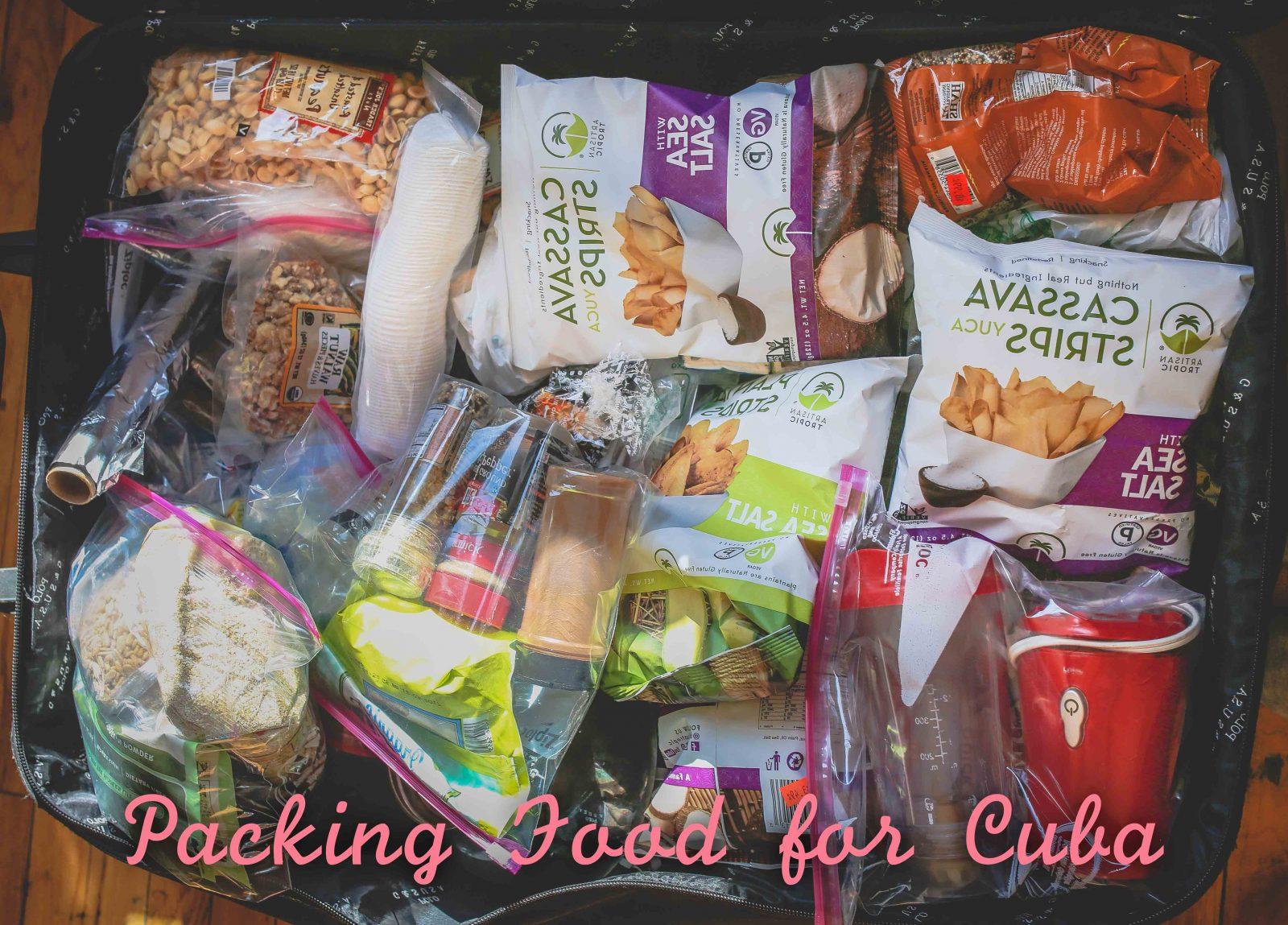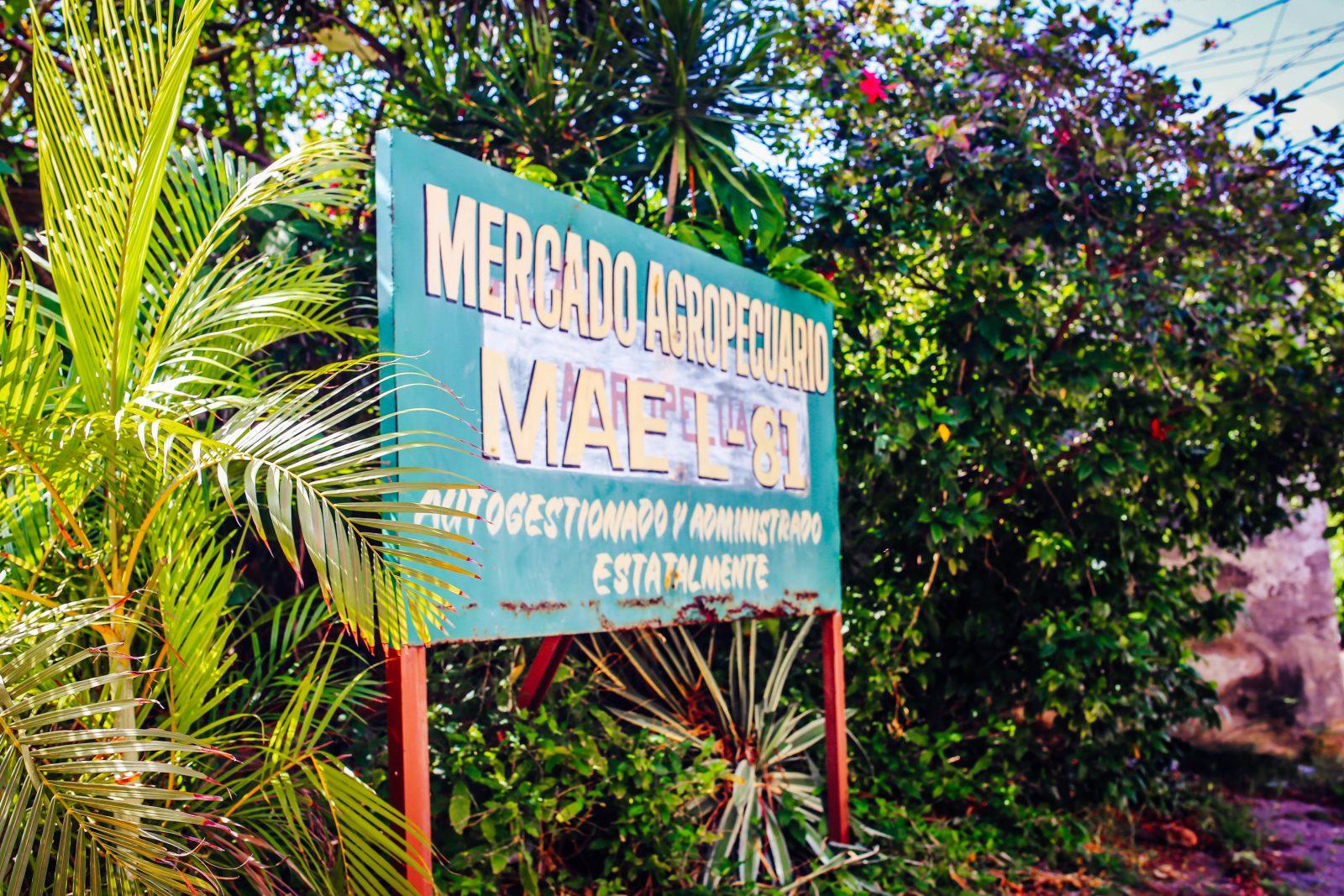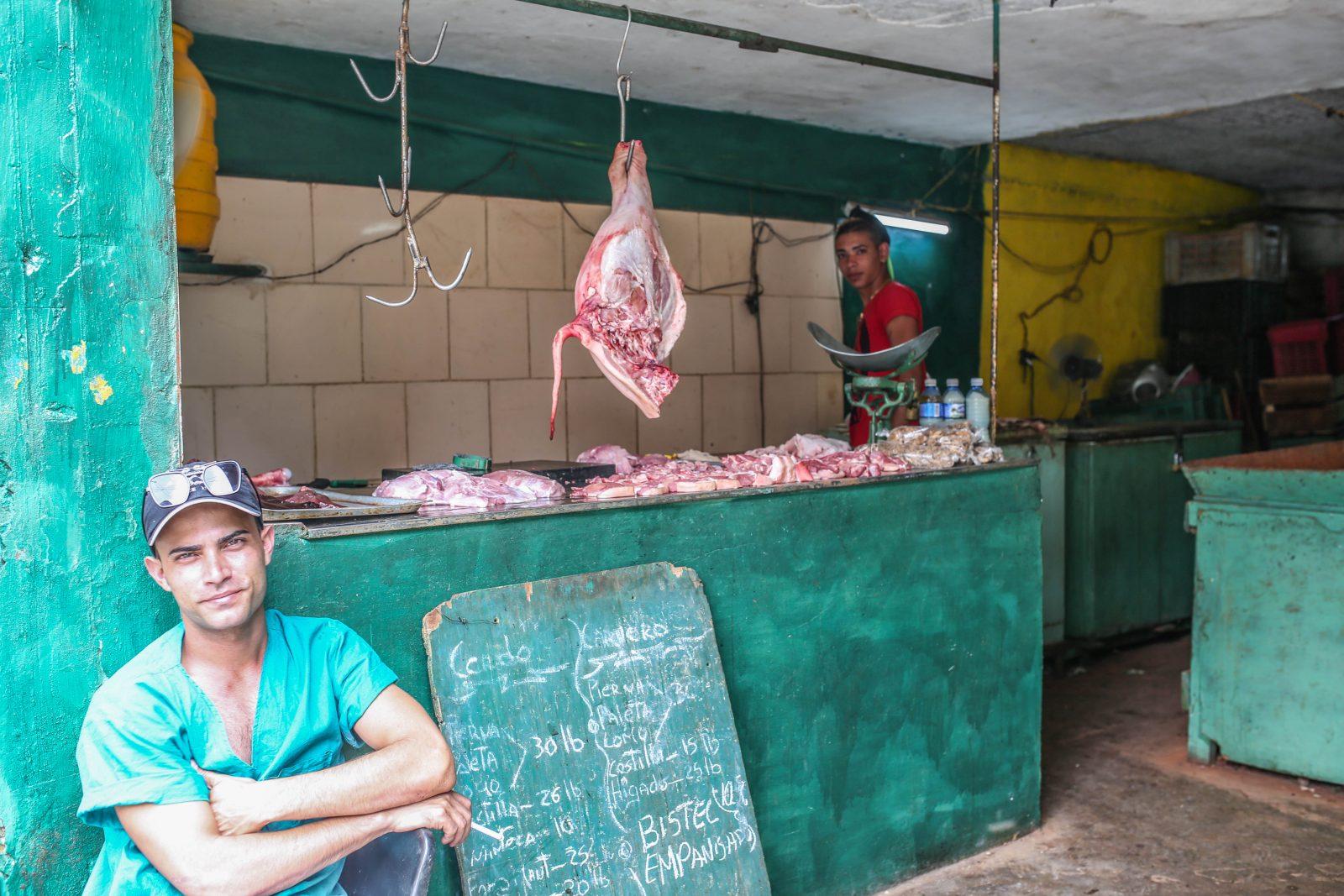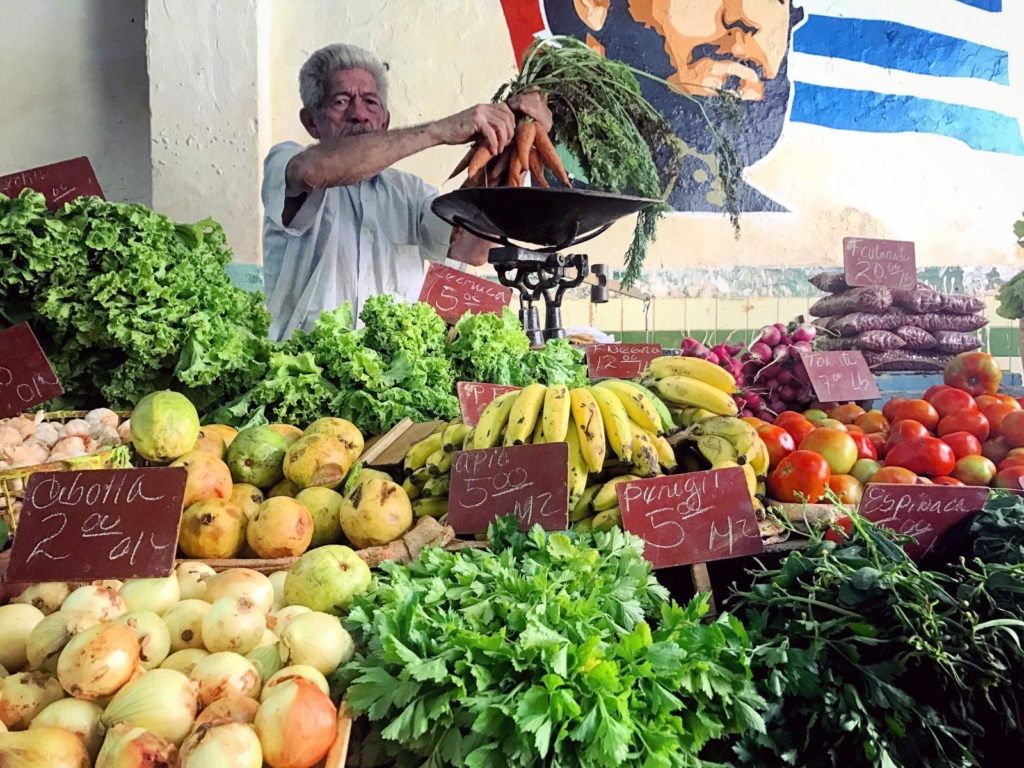Cuba, Travel Tips
Eating Healthy in Cuba, Despite Scarcity
In Cuba, healthy eating often takes a back seat in the country’s long list of priorities. Lovers of healthy foods or those with nutritional requirements headed for Cuba may face some hurdles. But with preparation and knowledge, it is possible to eat nutritiously in Cuba. Whether you’re moving long-term or touring for a short period, I will break down the logistics on how to eat healthy in this special country despite its limited access to resources.
Table of Contents
How to Eat Healthy While Traveling Through Cuba (Short-term Travel)

Since you’re traveling short-term, you likely won’t have an apartment or kitchen to yourself and/or you probably won’t have time to figure out how to buy food and cook at home. So for healthy eating in Cuba, your best bet is to bring healthy snacks and invest in pricier dining. The easiest way around this is to go the fancier more expensive private restaurants (“paladares” or “paladar”) and to coordinate meals with your casa hosts if possible. The more resourceful paladares may be able to offer you more options for fresh greens.
Not-so-fun-fact: The luxury of you eating these healthier foods in paladar restaurants is causing a strain in fresh food availability and affordability for local Cubans. If you can, consume mindfully and as least wasteful as possible.
Tips on packing food for Cuba travel:
- Pack healthy dry food before you go. My favorites are dried fruits, nuts and nutrition bars. These are also great for snacking on the road since it can hard to get a quick healthy bite in Cuba.
- Talk to your waiter about the menu items before sitting down because sometimes what they have on the menu might not be available that day.
- Ask exactly which types of vegetables (“viandas” or “verduras”) they have because sometimes a “side of vegetables” can literally mean a thin slice of potato.
- Eat at your casa particular. They will be more willing to cater to your nutritional needs than a busy restaurant. These plates should cost about $7-10 for dinner. And $3-5 for breakfast. It’s “expensive” for a developing-country/Cuban-standards, but your time and options will be slim.
- If they are offering a “natural fruit juice” – most of the time it is juice from a carton with tons of sugar, coloring, and preservatives. Ask if it freshly cut up fruit blend and for no milk or sugar (depending on your restrictions).
- Ask for little to no added sugar. Otherwise, a third of your cocktail/drink will consist of granulated sugar.
- If you happen to pass by a fruit stand, seize the moment and stock up!
My Favorite Healthy Restaurants/Cafes in Cuba in Havana
- Cuba Libro: For real fresh fruit juice and a sweet respite from the hustle of downtown Havana. [$]
- El Del Frente: Incredible interior, and one of the only places I could get a varied plate of fresh vegetables and fish. [$$$]
- Cafe Brown: Very affordable. They offer a delicious and generous plate of tomato-roasted chickpeas with vegetables ($2) and it’s the only restaurant with freshly-made gazpacho soup ($3). [$]
- La Guarida: This famous restaurant is lauded for its gorgeous interior and Fresa & Chocolate movie feature in the 90s. You’ll find a long menu bustling with varied options that will likely cater to almost any restriction. [$$$$]
Contact me for recommendations outside of Havana.
Traveling with Food Allergies to Cuba
If you have serious food allergies, this is likely not the country for you. You could possibly explain it to your casa owner ahead of time and only eat there.
Healthy Eating While Living in Cuba (Or Long Term Cuba Travel)

Packing and Preparing to Move to Cuba
Dedicate at least an entire suitcase to just food. For me, this was a lifesaver. When any friends or family come to Cuba, ask them to replenish your things. For an idea of some items to bring take a look at what I packed: quinoa, coconut flour, raw cocoa, coconut oil, oatmeal, peanut butter, walnuts, cashews, peanuts, sunflower seeds, chia seeds, flax seeds, dried fruits, maca, hemp, hundreds of energy/protein/fruit bars, herbal seasonings, non-caffeinated teas, olive oil, snack chips, and nutritional supplements.
Survival Tips Once You’re in Cuba
- Ask local Cuban folks where the nearest food markets are for the specific items you seek and what time they close.
- Depending on how long you will be here, consider growing your own fruits and veggies.
- To truly eat clean and healthy, cooking will likely become your new friend. You’ll not only be eating healthy and saving money, you’ll also be saving time. Eating in a restaurant in Cuba can take hours (like everything else in Cuba).
How to Shop for Food in Cuba: Agromercados, the Cuban Supermarkets

Shopping for food in Cuba is not easy. There are some agromercados (tiny “super markets”) where you can buy certain fruits and vegetables. These are usually open until 3 or 4 PM and are closed on Mondays and Sundays. They also usually sell about 3 or 4 types of food items and that’s it. So you have to either get creative with limited items or commute to multiple markets around town to fulfill your varied needs.
Finding Specific Fresh Foods

Viandas (aka viveres or root crops) will be your friend in Cuba. Especially if you are averse to grains/gluten. “Root crops” are more commonly consumed in Latin America, the Caribbean, and Africa. They include but aren’t limited to: potatoes, plantains, cassava (yuca), malanga, boniato (batata), yame, etc.
Beans/Frijoles are everywhere in Cuba. They’re delicious and nutritious!
Bananas are usually either not ripe enough to eat or they are too ripe when you find them for sale. Be careful buying them green, some are plucked too early and never turn yellow. They go from green to black and moldy. Source: experience.
Apples need cold weather. Therefore, they are almost impossible to find growing in Cuba unless imported. If you do miraculously find apples, they are usually sold on a street corner for about $1 each. Apples are a luxury item in Cuba.

Mamay is a super sweet fruit, perfect for smoothies. It are very hard to find ripe. Avoid buying mamay if it’s too hard on the outside. But if you do find ripe ones, seize the moment! I couldn’t begin to try to describe the taste of this fruit, but it’s a must try while in Cuba.
Garlic can be rare and expensive. A “good” wreath (about 20 bunches) on the street goes for $6 (~20% the average monthly salary). If you’re not sure about the quality, ask a local on the side if it’s a good bunch.
Onions are sold similarly to garlic but tend to be cheaper during their high season. I bought an entire healthy wreath for $3.
Eggs are only legally sold in a number of places, sometimes. So when you see someone carrying eggs, ask them where they got their eggs and run to make that line!

Meat & Fish – It took me a month to figure out a place to buy chicken here after being denied in random shops for not being a libreta/food ration-card holder. In Havana, frozen meat is available in specific indoor mercados, such as FOCSA and Mercado Amistad in Havana. Or you can ask locals where to find the nearest vivero (pictured above). Admittedly, I’m not a big meat-eater so I didn’t try too hard.
Conclusion
The key to finding items while you’re in Cuba is patience, money, endurance, and getting out there. In Cuba internet is limited, and updated information about Cuba is rarely posted online. Talk to your neighbors, co-workers, roommates, professors, host family and local expats to find the markets near you. Get to know your neighborhood by walking around on foot.
Talking to people and walking outside, is the best way to discover what your neighborhood has to offer. This may not come naturally to us folks raised dependent on cars and the internet. But this is the Cuban way. Once I wrestled Cuba’s learning curve for eating healthy, I was amazed at how much I could do with so little! And I grew a special appreciation for the luxuries I had once taken for granted back home.



Wow. I had no idea food was so hard to find in Cuba. You’ve shared some valuable info & love that you’ve also shared your fave restaurants.
Thanks, Hunter! I didn’t know either till I went.
Cuba looks beautiful I’d love to visit it one day. I also had no idea that is was so difficult there, I will certainly bare this in mind if I am lucky enough to go. I hate the idea of being wasteful but it makes it even more important knowing that it affects the locals so badly.
I’m not sure if I will ever travel to Cuba, but this is very good information for those who are travelling to Cuba. It’s great of you to share these useful information online and make it accessible.
Oh man. Cuba is one place that I don’t have a desire to visit. I have yet to hear anyone say anything good about the food there. Your blog is really helpful for those that want to go.
Wow! Cuba is one on my bucket list. I will definitely love to go there and a lot of healthy foods.
This is such a great place to visit. Lots of healthy foods and fruits. I will definitely check this out and have plan to visit cuba someday.
I can’t wait to travel South America next year (fingers crossed) I like your tips of eating at your casa particular and others as well. Going to bookmark it for later .Can i ask why are you living in Cuba?
Thank you! I was studying there. And it’s a special place. 🙂
As a vegetarian, I always stock up when I travel. So, on my trip to Cuba, I brought enough protein shake mixes, powdered peanut butter, and dried nuts to last me a week. Lucky me, because it took me two days to find an open air market to purchase fruit. Another thing to note is that most places in vedado are either closed on Sundays and Mondays or close very early- just something to keep in mind if you plan on hitting up a store after your flight! But, had I read this article first, I would have encouraged my vegan friend to also stock up! lol She ended up eating guavas and avocados all week! Not the worst but certainly not enough protein.
Significant and valuable post.Your post consists everything including allergy to healthy restaurants. Cuba looks exotic and beautiful. Love to visit Cuba someday.
Cuba has a so rich culture. We really need to be mindful before we go to visit a country. I am happy I found your article letting us know what we should bring and advising the best restaurants. 🙂 Thank you!
In La Habana…Is virgin olive oil expensive? And green tea? Any advise? Thanks in advance.
Yes it is very expensive there. Green tea you can find sometimes …but it’s better to bring yours.
Recently told that American type cookies are something that the Cuban people we are meeting during a humanitarian trip by our group this summer want to learn to make. At the time we were also told that flour was a difficult item to get. Is this true and is it just a matter of availability or is it cost?
Good info. I plan to be in Cuba in June.
I just returned from a 2 week trip to Havana, Vinales, Trinidad, Cienfuegos and was amazed at the lack of availability of products. As a tourist, the few markets I saw had canned goods priced in CUC with very little selection. There was a line for bread in Cienfuegos and I was told it was because flour was imported and scarce. I wouldn’t be surprised if flour (if available) is rationed and, as I understand, rations are quite meager by US standards, so it might be helpful if you could bring as many ingredients as you can since cookies would be a luxury. Needless to say, I have a much greater appreciation for what I have access to in the US.